African travel destinations – Let’s explore here
Take a look at the African travel destinations below to see if there is anywhere you’d like to explore. Click on the map or the countries below to find further information and tips for overland travel, as well as some anecdotes that may help you on your travels.
What’s it like in Africa?
Africa covers almost 20% of the land area on the planet (three time larger than Europe). It has about 18% of the world’s population, although on average it is the youngest population in the world. Each country has an incredible richness to its history, and historically there is no part of Africa that has not been affected in one way or another by those in power in Europe. There are over 50 countries in Africa currently, and Algeria is the largest country by area, whereas Nigeria has the largest population.
The diversity of the continent is astounding, reaching from the desertification areas of the Sahara in the north, down through the tropics to the temperate zones in Southern Africa. It is often referred to as having some of the best and worst driving conditions in the world.
Remember, when you’re planning your next trip to look at our info on visas, driving abroad and take a look at what time zone it’s in.
We’re constantly updating information on countries that we visit, so keep referring back to the info as it evolves.
A bit about the history of Africa
Ancient Civilisations
Africa is home to some of the earliest human civilisations. In ancient Egypt, one of the world’s earliest and most influential civilisations developed along the Nile River. Egypt became a powerful kingdom known for its monumental architecture, such as the pyramids, and advances in mathematics, medicine and writing. Other significant ancient African kingdoms include Nubia, Carthage, and the Kingdom of Axum, which thrived in areas of modern day Sudan and Ethiopia.
The Rise of Kingdoms and Empires
From the 7th century onwards, several powerful kingdoms and empires rose in Africa. The Kingdom of Ghana (not to be confused with modern day Ghana) flourished in west Africa, known for its wealth from gold trade. The Mali Empire, which reached its peak in the 14th century under Mansa Musa, was another major west African power, renowned for its wealth and cultural achievements. In the east, the Swahili Coast prospered through trade with Arabia, India and China.
Islamic Influence and Trade
In the 7th century, the spread of Islam across north Africa had a profound impact on the continent. The Arab conquest introduced new religious, cultural and political systems. Islamic states such as the Almoravid Empire and the Sultanate of Zanzibar dominated north and east Africa. Meanwhile, the trans-Saharan trade routes allowed for the exchange of goods, ideas, and knowledge between Africa and the broader Mediterranean and Islamic worlds.
European Exploration and Colonisation
From the 15th century, European exploration led to the colonisation of African territories. The Portuguese were among the first Europeans to establish trading posts along the coast, focusing on the slave trade, gold and spices. By the 19th century, European powers, including Britain, France, Germany, Belgium, Portugal and Germany, began carving up Africa, creating colonies through treaties and military conquest. The Scramble for Africa was formalised at the 1884-1885 Berlin Conference, where European powers divided the continent without regard for African ethnic or political divisions.
The Transatlantic Slave Trade
One of the most tragic aspects of Africa’s history during this period was the transatlantic slave trade, which spanned from the 16th to the 19th centuries. Millions of Africans were forcibly taken from their homeland and shipped to the Americas to work on plantations. This not only devastated African societies but also contributed to economic growth in the Americas and Europe.
Independence Movements
Following World War II, many African nations began to demand independence from European powers. By the 1950s and 1960s, a wave of decolonisation swept across Africa, with countries like Ghana (1957), Algeria (1962) and Kenya (1963) gaining independence. The independence movement was often led by nationalist leaders such as Kwame Nkrumah, Nelson Mandela, and Jomo Kenyatta, who sought to free their nations from colonial rule and racial segregation.
Post-Independence Challenges
After independence, many African countries faced significant challenges, including political instability, ethnic conflicts and economic difficulties. Some countries, like Egypt, Kenya and Nigeria, experienced military coups and authoritarian regimes. In South Africa, apartheid, a system of racial segregation, continued until the early 1990s, when Nelson Mandela was released from prison, leading to the end of apartheid and the establishment of a multiracial democracy in 1994.
The African Union and Regional Integration
Since the late 20th century, African countries have sought to promote regional integration and cooperation. The Organisation of African Unity (OAU) was established in 1963 to promote unity and solidarity among African nations. In 2002, the African Union (AU) replaced the OAU with the goal of accelerating political and economic integration, peace and development.
21st Century Africa
Today, Africa is a continent of diverse nations with rich cultural and historical legacies. Some countries, like Nigeria, South Africa and Kenya, have experienced significant economic growth, while others continue to face challenges such as poverty, corruption and conflict. Africa’s political landscape remains varied, with both democratic governments and authoritarian regimes. The continent continues to deal with the effects of colonialism, but it is also making strides in development, technology and international influence.
Either click on the map of African travel destinations …
Or choose an African travel destination below …
Algeria

Algeria is the largest country in Africa, dominated in the south by the Sahara Desert. and is the centre of the Maghreb.
Click the image for more info …
Angola

Angola has a desert-like coastal plain, with hills and mountains running parallel to the coast, and a large plateau to the east.
Click the image for more info …
Benin

Benin consists mostly of forest and savanna, with low mountains in the north west, and most of its population lives by its short coast.
Click the image for more info ..
Botswana

The Kalahari desert covers most of Botswana, making it one of the least densely populated countries on earth.
Click the image for more info …
Burkina Faso

Burkina Faso is a mostly very flat, landlocked country in west Africa, although in the south west there are sandstone cliffs.
Click the image for more info …
Burundi

Burundi was once a densely forested country, but subsistence agriculture and grazing has reduced the forest to only 6% of the country.
Click the image for more info …
Cabo Verde
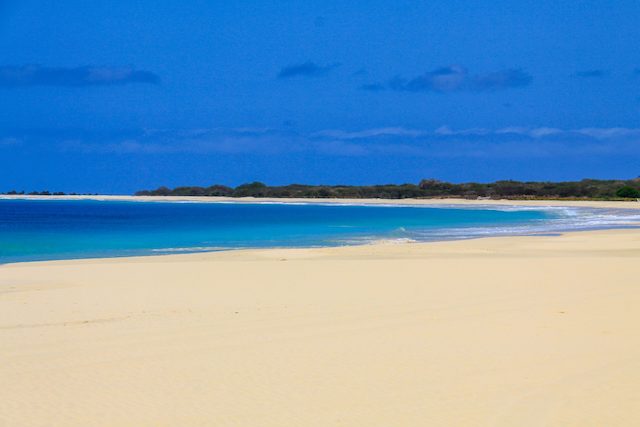
more info here soon…
Cameroon

Cameroon is comprised of almost all terrain that’s found throughout Africa, and as such is often described as ‘Africa in Miniature’.
Click the image for more info …
Central African Republic

The terrain of CAR is comprised of lowland hills covered in forest in the south, swamp forests in the west and savannah elsewhere.
Click the image for more info …
Chad

The Tibesti Mountains in the north of Chad are home to Emi Koussi, the highest mountain in the Sahara, at 11,204 ft (3,415 m).
Click the image for more info …
Comoros
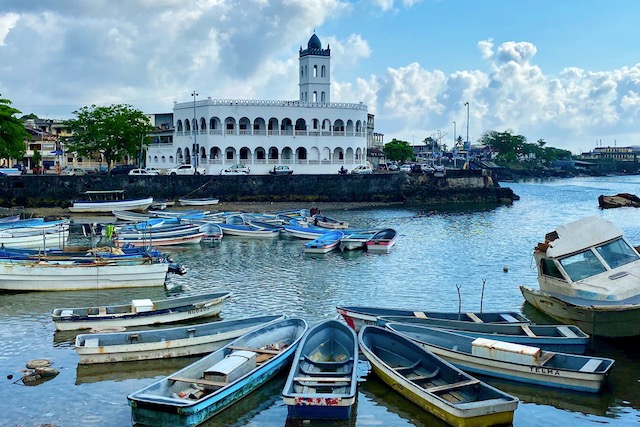
more info here soon…
Democratic Republic of Congo

The Democratic Republic of Congo is home to the second largest rainforest on earth, after the Amazon.
Click the image for more info …
Republic of the Congo

The Republic of Congo is mainly comprised of savannah, rugged mountains and forests. It relies heavily on its oil revenues.
Click the image for more info …
Cote d’Ivoire

Cote d’Ivoire consists mostly of farmland for the production food and cocoa beans – for which it is the world largest exporter.
Click the image for more info …
Djibouti

Lake Assal, which is located in the centre of Djibouti, lies over 500 feet below sea level, making it the lowest point on land in Africa.
Click the image for more info …
Egypt

For something less touristy, visit Dahab, Nuweiba, and St Catherine’s Monastery in the Sinai.
Click the image for more info …
Equatorial Guinea

Equatorial Guinea is split between the mainland, and five islands. The island of Bioko, contains the capital, Malabo.
Click the image for more info …
Eritrea

In the centre of Eritrea lie tropical forests and towering highland cliffs. The capital, Asmara is one of the highest capitals in the world.
Click the image for more info …
Eswatini

Eswatini is relatively small, mountainous, landlocked Kingdom in southern Africa. It’s slightly smaller than Wales.
Click the image for more info …
Ethiopia

The Abyssinian Highlands in Ethiopia is the largest continuous mountainous range in Africa.
Click the image for more info …
Gabon

Ten percent of Gabon’s savannah, mountains and coastal plains have been turned into natural parks.
Click the image for more info …
Gambia

Gambia is only 30 miles (48 km) at its widest point and is the smallest country in Africa. It mainly consists of savannah and mangrove swamps.
Click the image for more info …
Ghana

Almost the same size as the UK, Ghana consists mostly of rainforest and savanna and mangroves. The name means “Warrior King” in Serakhulle.
Click the image for more info …
Guinea

Guinea consists of mountains unning north – south, jungle, lowland savannah grasslands and mangrove swamps. It’s about the same size as the UK.
Click the image for more info …
Guinea-Bissau

Guinea-Bissau is a mainly flat country consisting of savannah grasslands and mangrove swamps.
Click the image for more info …
Kenya

Mount Kenya, Africa’s second highest mountain, lies in the Kenyan highlands in the south-centre.
Click the image for more info …
Lesotho

Lesotho the only country in the world that lies entirely above 3,280 ft (1,000 m) in elevation. It can get pretty cold (-18°C, 0°F) .
Click the image for more info …
Liberia

Liberia mainly consists of rainforests, mangrove swamps and lowland savannah grasslands. It is Africa’s first and oldest modern republic.
Click the image for more info …
Libya

Libya is a large and beautiful country in north Africa, dominated in the south by the Sahara Desert, and by woodlands to the north. It relies heavily upon its oil reserves.
Click the image for more info …
Madagascar

more info here soon…
Malawi

Malawi is home to Lake Malawi, which has more species of fish than any other lake in the world. Almost half the population is under the age of 15 years.
Click the image for more info …
Mali

Historically Mali was the richest country in Africa. Mansa Musa, reportedly reportedly one of the richest rulers in antiquity was from Mali.
Click the image for more info …
Mauritania

Mauritania is almost entirely Saharan desert, and includes the fascinating Richat Structure, also known as the ‘Eye of Sahara’, that can be seen from space.
Click the image for more info …
Mauritius

The third largest coral reef in the world is in Mauritius, and there are numerous low mountains on the islands.
Click the image for more info …
Morocco

Morocco is comprised of stunning Saharan desert that merges with the vast Atlas Mountains and the Rim Mountains.
Click the image for more info …
Mozambique

Mozambique mostly consists of hills and highlands to the north, with some mountains to the south.
Click the image for more info …
Namibia

Namibia’s Namib desert lays claim to being the oldest and driest desert in the world, and has the highest dunes on earth.
Click the image for more info …
Niger

Niger is a landlocked, mainly flat, desert country in west Africa, about five times the size of the UK.
Click the image for more info …
Nigeria

Nigeria is a the most populous country in Africa – there are over 230 million people. It’s almost four times the size of the UK.
Click the image for more info …
Rwanda
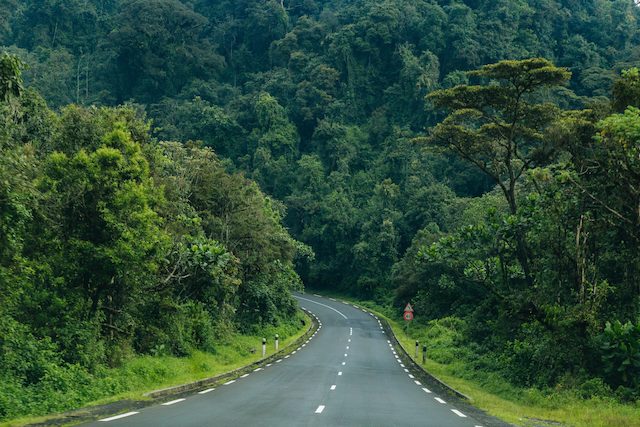
The entire country of Rwanda sits at a high altitude, the lowest point being 3,117 ft (950 m) above sea level.
Click the image for more info …
Sao Tome and Principe
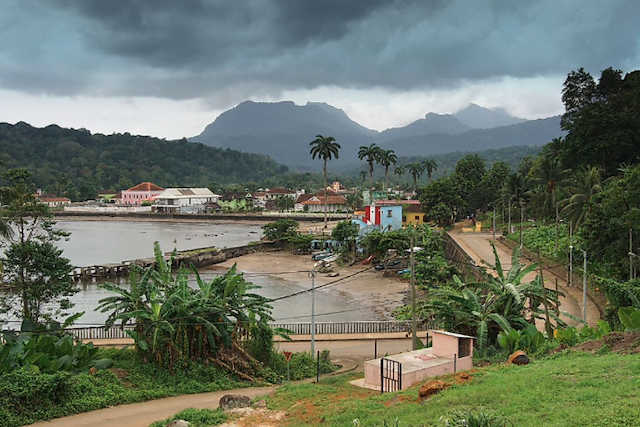
more info here soon…
Senegal

Senegal’s capital, Dakar, is the most westerly point in Africa. The country mainly consists of savannah grasslands and mangrove swamps.
Click the image for more info …
Seychelles
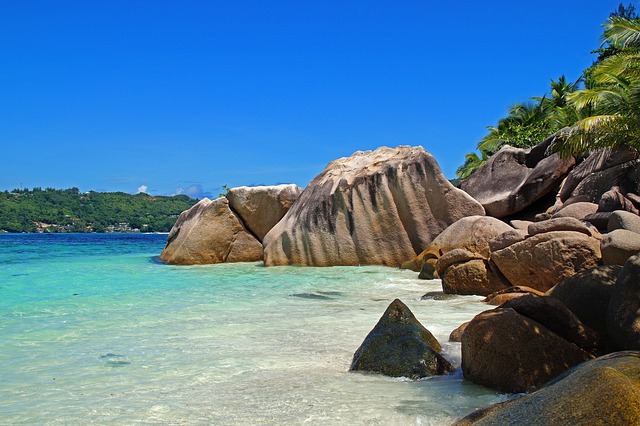
more info here soon…
Sierra Leone

Sierra Leone is about the same size as Ireland, and mainly consists of rainforests, mangrove swamps and lowland savannah grasslands.
Click the image for more info …
Somalia

Somalia has the longest coastline in Africa, at 2,070 miles (3,333 km). In the north lie desert-like mountains.
Click the image for more info …
South Africa

South Africa has the greatest number of world heritage sites in Africa, including the ‘Cradle of Humankind’.
Click the image for more info …
South Sudan

One of the swamp regions of South Sudan was so difficult to cross, it stopped both the ancient Egyptian and the Romans.
Click the image for more info …
Sudan

Sudan is mainly made up of desert plains, aside from the volcanic Marrah Mountains in the west.
Click the image for more info …
Tanzania

Tanzania is one of the oldest continuously inhabited places in the world, and today is the most populous country in the southern hemisphere.
Click the image for more info …
Togo

Togo is about the size of Croatia, and consists mostly of rainforest and savanna, with lagoons and beaches along its 35 miles (56 km) coast.
Click the image for more info …
Tunisia

In ancient times Tunisia was the home of the Carthaginian Empire that dominated the Mediterranean. In the west lie the Atlas Mountains.
Click the image for more info …
Uganda

All of Uganda is at a high altitude, the average being 2,953 ft (900m) above sea level. Lake Victoria dominates the south.
Click the image for more info …
Zambia

Zambia is a large, landlocked country in central Africa, about three times the size of the UK.
Click the image for more info …
Zimbabwe

Zimbabwe, a landlocked country in central Africa, had a time period with the second highest hyperinflation ever recorded.
Click the image for more info …
Thanks to those aspiring photographers at Unsplash and Pixabay for some of these images … you are awesome!
